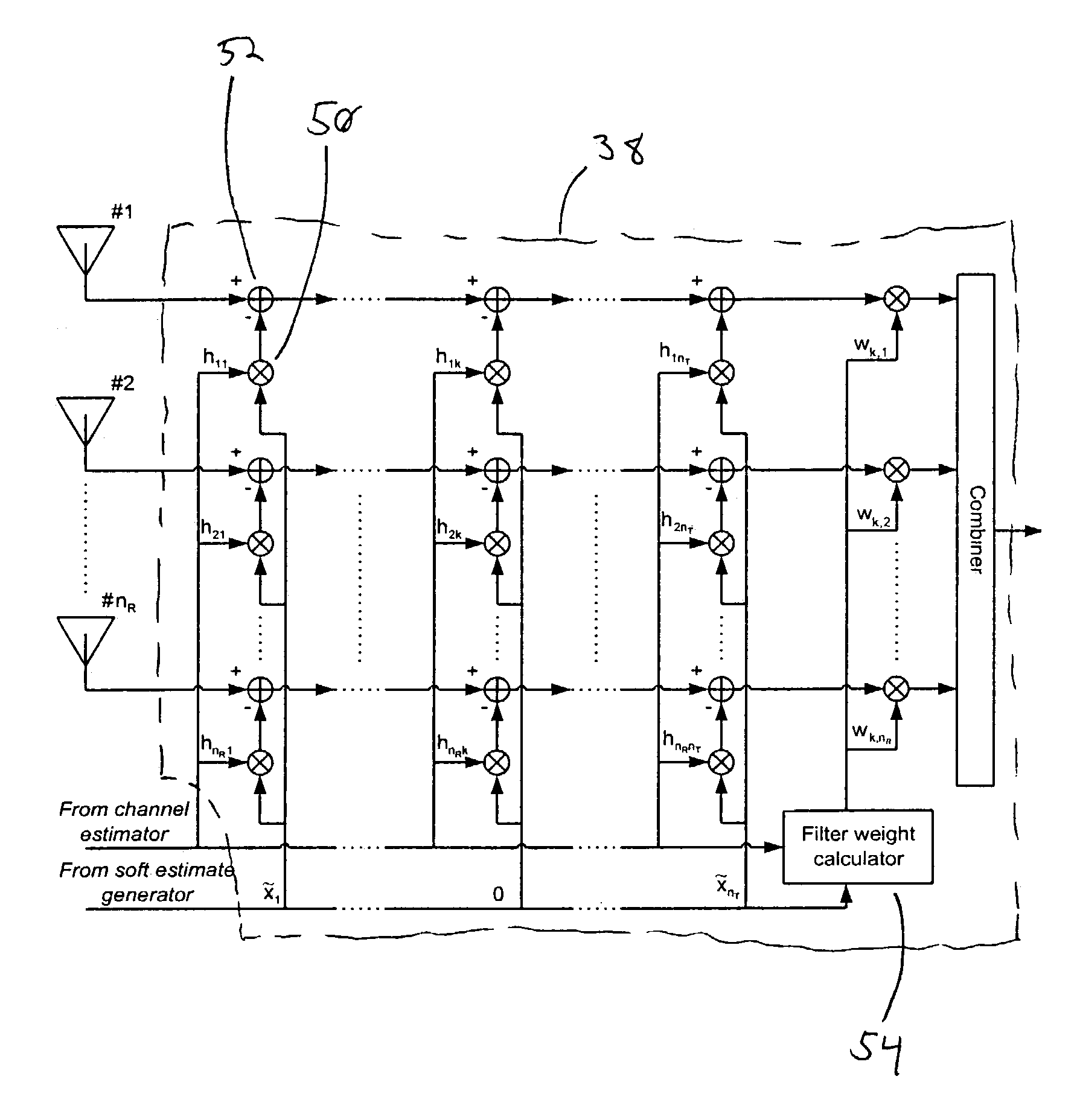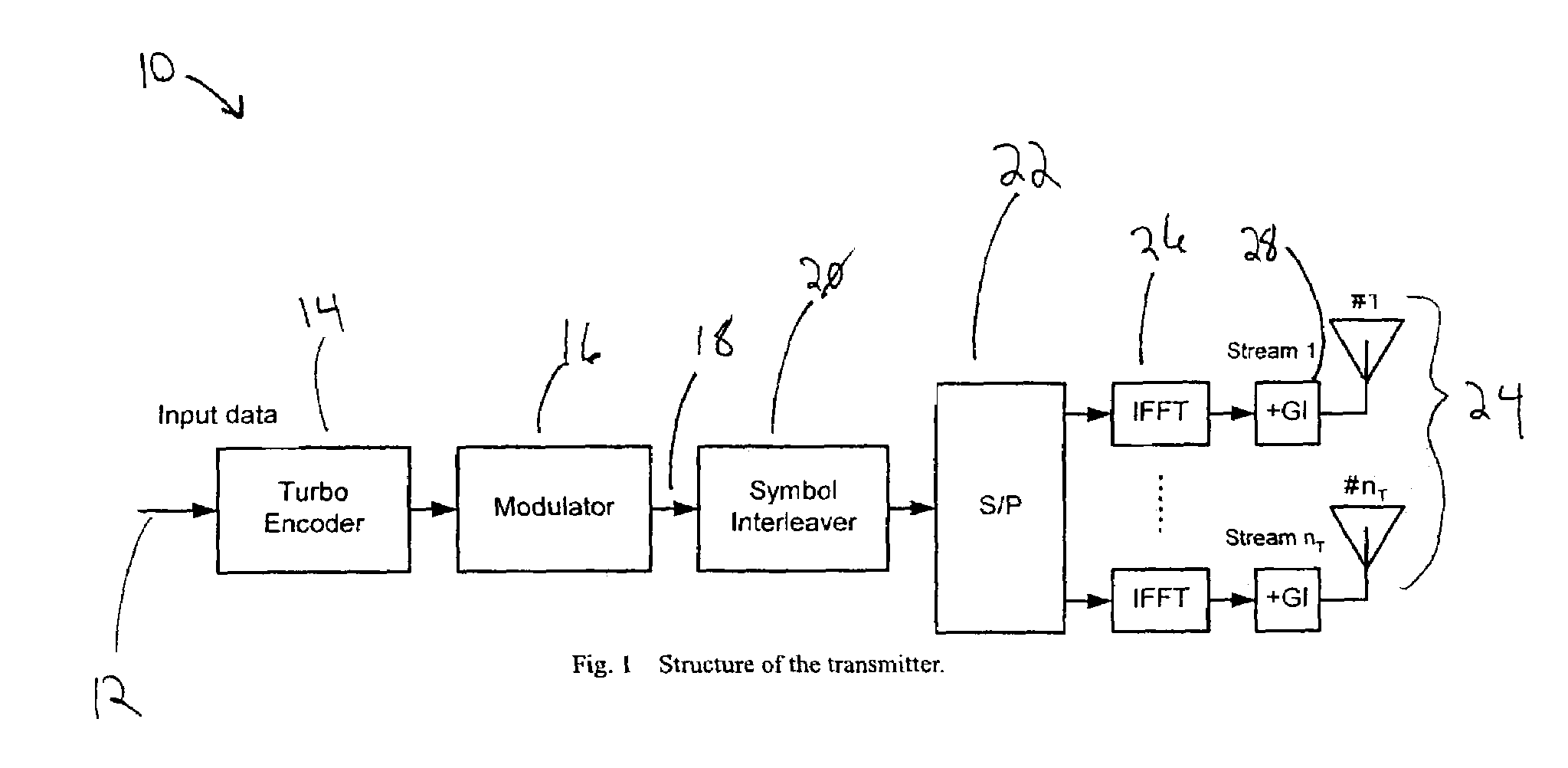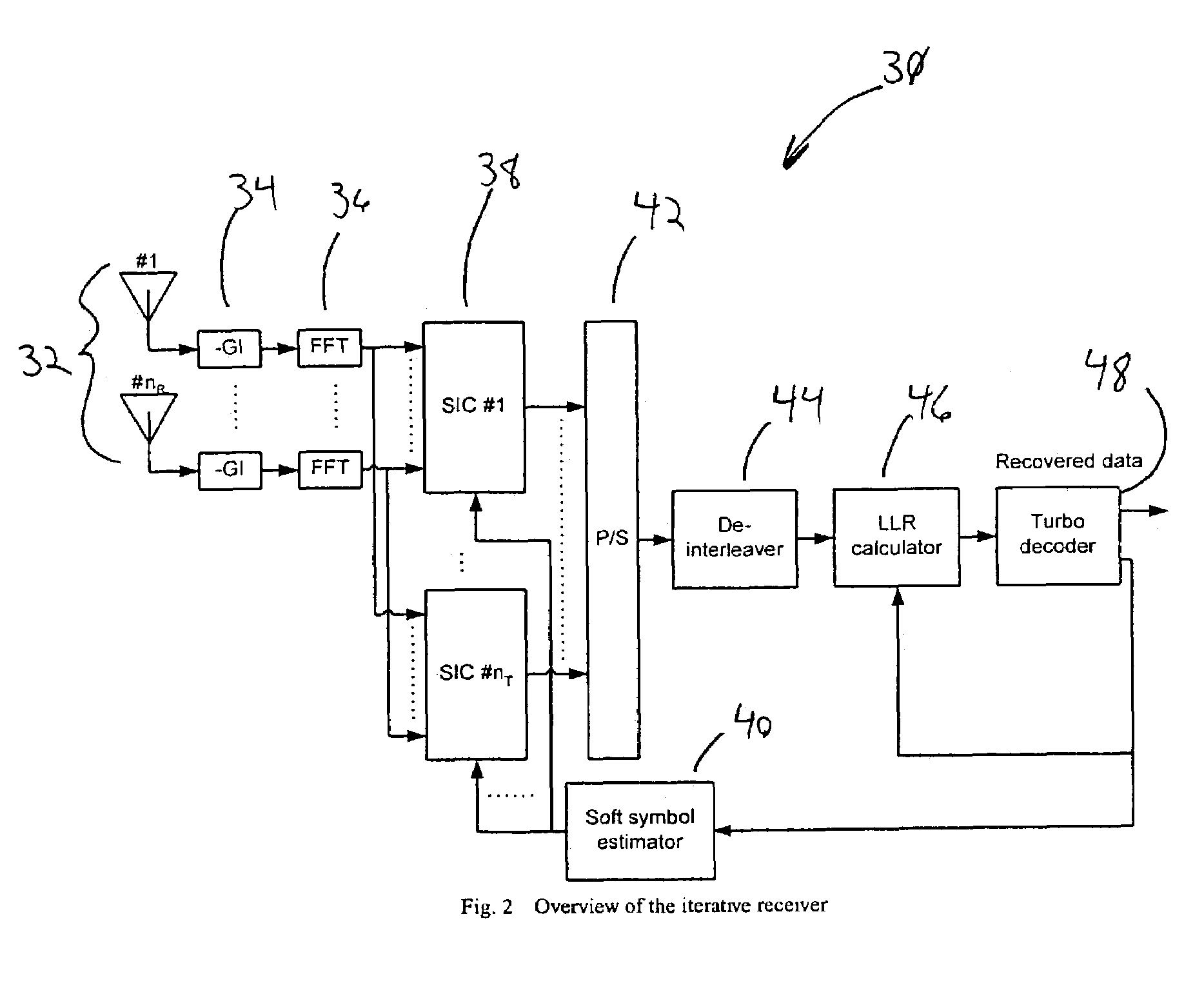Iterative soft interference cancellation and filtering for spectrally efficient high-speed transmission in MIMO systems
a technology of high-speed transmission and filtering, applied in the field of telecoms, can solve the problems of user demand for data rate of approximately 100 mbps, inability to achieve the bit rate up to 10 mbps, and inability to achieve the bit rate, etc., and achieve the effect of high-speed digital-to-analog and analog-to-digital converters
- Summary
- Abstract
- Description
- Claims
- Application Information
AI Technical Summary
Benefits of technology
Problems solved by technology
Method used
Image
Examples
Embodiment Construction
[0018]FIG. 1 shows the configuration of the transmitter, generally 10. The input data bit stream 12 is first encoded by a turbo encoder 14, and fed to a modulator 16 to generate complex baseband symbols 18. In this embodiment, QPSK modulation with Gray mapping is employed. However, those skilled in the art will recognize that the following descriptions are easily expanded to other modulation schemes. The QPSK symbols are randomly interleaved by a symbol interleaver 20, and serial-to-parallel (S / P) converted in S / P converter 22. The interleaver 20 is necessary to randomize both the channel and the interference seen by receiver. The S / P-converted nT symbol streams are simultaneously transmitted from nT antennae 24 sharing the same frequency band. When Orthogonal Frequency Division Multiplexing (OFDM) and / or spread spectrum is employed, Inverse Fast-Fourier Transform (IFFT) 26 and / or spreading are applied to each symbol stream after S / P converter 22. Optionally, guard intervals may als...
PUM
 Login to View More
Login to View More Abstract
Description
Claims
Application Information
 Login to View More
Login to View More - R&D
- Intellectual Property
- Life Sciences
- Materials
- Tech Scout
- Unparalleled Data Quality
- Higher Quality Content
- 60% Fewer Hallucinations
Browse by: Latest US Patents, China's latest patents, Technical Efficacy Thesaurus, Application Domain, Technology Topic, Popular Technical Reports.
© 2025 PatSnap. All rights reserved.Legal|Privacy policy|Modern Slavery Act Transparency Statement|Sitemap|About US| Contact US: help@patsnap.com



